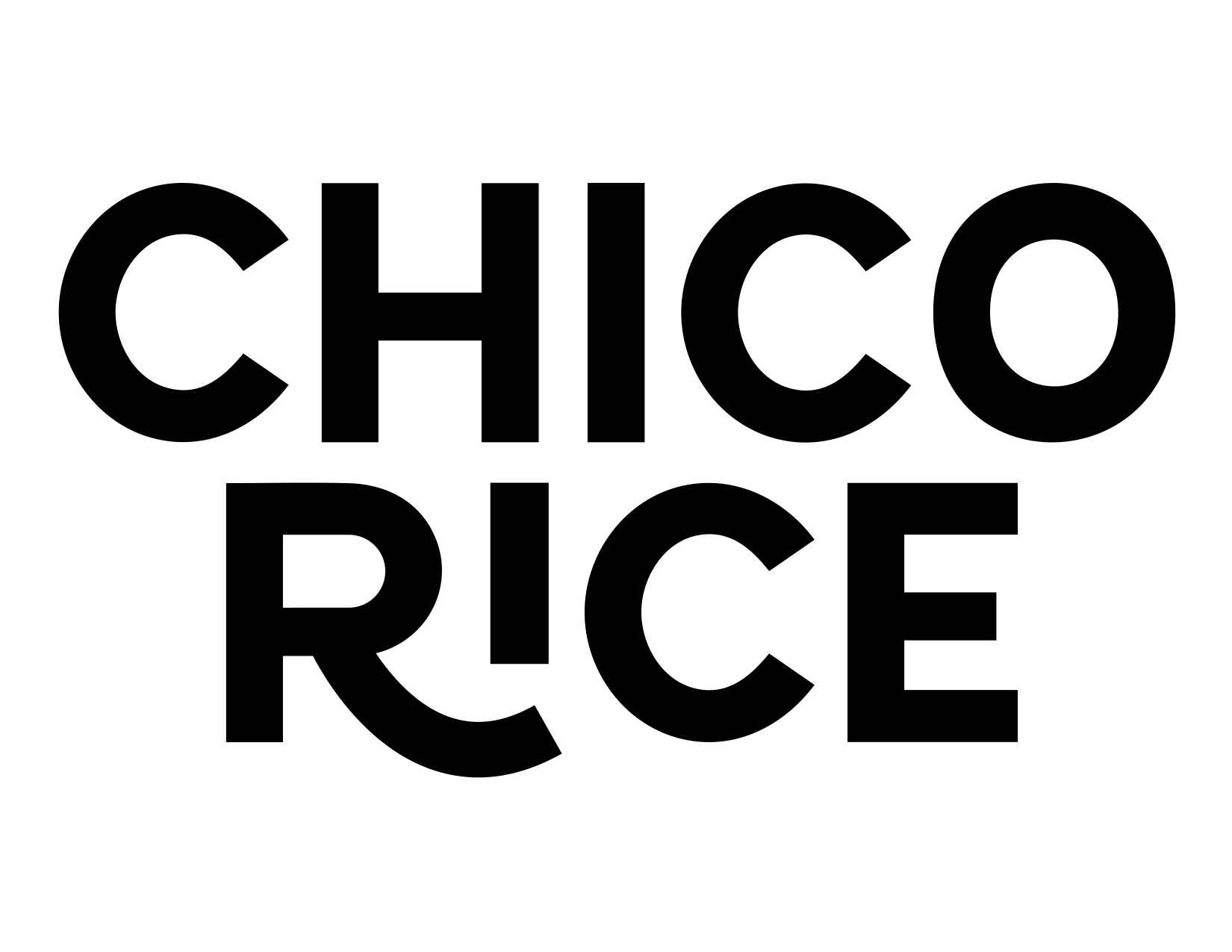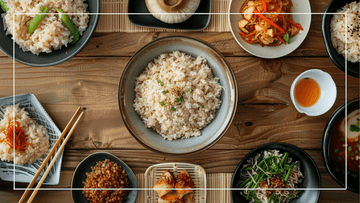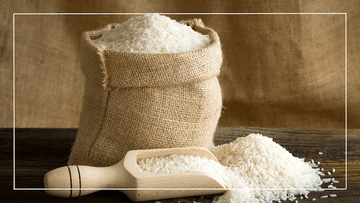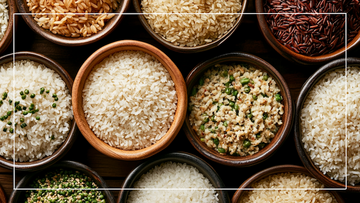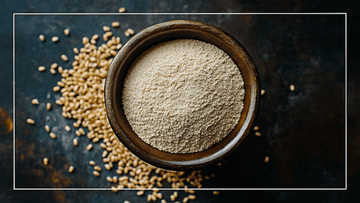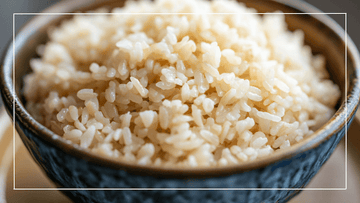Welcome to the flavorful world of Japonica rice – a culinary gem cherished for its unique texture, delightful taste, and versatility in the kitchen. As one of the two primary types of rice cultivated globally, alongside Indica rice, japonica rice holds a special place in the hearts and palates of people across East Asia and beyond. Japonica rice is also a large majority of the rice that is grown in California in the Sacramento Valley.
In this blog you will learn more about what makes japonica rice so special and also learn 3 different methods on how to cook japonica rice on a stove, rice cooker and an Instant Pot!

What is Japonica Rice?
Japonica is one of two main types of rice that is grown in the world, the second being Indica rice. Japonica rice is very popular in East Asia and widely grown in the United States, especially California. One of the characterisitcs that makes it stand out is its texture. It has a stickier texture that makes the rice clump together and not separate. The rice also has a sweet, nutty flavor when eaten on its own.
Why is Japonica Rice Sticky?
Japonica rice’s texture is one of the reasons that this rice is so popular. It sticks together making it a great malleable ingredient for recipes. While most japonica rice has a stickier texture than others, the glutinous variety of japonica rice is the one that is commonly referred to as “sticky rice” or “sushi rice.” This is that type of variety that Chico Rice grows for our Blonde and Brown Milled rice.
The name ‘glutinous’ originates from the texture being glue-like, not to confused with gluten. Glutinous japonica rice is completely gluten free (as is all other rices)! Understanding the texture is important when learning how to cook japonica rice. If you are not prepared for the stickier texture than you might not know when the rice is cooked correctly.
Selecting Your Japonica Rice
The first step to cooking Japonica rice begins even before you step into the kitchen – it starts at the market. When selecting japonica rice, look for grains that are plump and have a pearly appearance. This indicates freshness and quality.
It is important to remember that japonica rice is a variety of rice so there are different types of japonica rice to choose from. Some popular japonica rice you might see on a shelf at the grocery store are:
- Calrose White rice
- Brown rice
- Black Japonica rice
- Arborio rice
To guarantee freshness look for companies that do not store their milled rice for long periods of time. At Chico Rice, we believe that the freshness of our rice is key to its taste and quality. That's why we mill our rice in small batches, ensuring that each bag is as fresh as it can be. Experience the unique flavors of our Brown Milled California Japonica rice or our Blonde Milled California Japonica rice and savor the difference.
How to Prepare Japonica Rice
Now that we have learned about japonica rice and made our selection on which type to eat, it’s time to prepare it. Mastering the preparation of your japonica rice is essential for unlocking its ideal texture and flavor. Here's how to do it:
Rinsing: Begin by measuring the amount of rice you need. A good rule of thumb is about ½ to ¾ cup of uncooked rice per person. Place the rice in a fine-mesh sieve (or a bowl if you don’t have one) and rinse it under cold water. Gently swish the rice around with your hand. This step removes the excess starch from the surface, preventing the rice from becoming too gummy. Continue rinsing until the water runs clear, usually after 1-2 minutes.
Cooking Japonica Rice: Now that you know how to prepare your japonica rice, we get to the heart of the matter – how to cook japonica rice. Different types of japonica rice require varying water-to-rice ratio and cooking time. We will go over how to cook the most well-known japonica rice, Calrose rice, and our own Chico Rice Brown rice and Blonde rice.
The most popular method when cooking japonica rice is a stovetop because most kitchens have a stove, however you can be very successful with a rice cooker or an Instant Pot with just some small changes to your recipe!

Calrose Rice
Stovetop
Add 1 cup of your rinsed rice to a medium saucepan and add 2 cups of water. Cover the pot with a tight-fitting lid and bring to a boil on high heat. After it reaches a boil, reduce the heat and let the rice simmer for 15-20 minutes. After the rice has soaked all the water, remove the saucepan from the heat and let sit for 5 minutes. After resting, fluff your rice with a fork and enjoy!
Rice Cooker
Use the same recommended water-to-rice ratio from the stovetop recipe for the rice cooker. Add the rinsed rice and water to the rice cooker. Close the lid and start the cooking cycle according to your machine's instructions. Let the rice rest for about 5-10 minutes after cooking. Fluff with a fork and enjoy!
Instant Pot
Add your rinsed rice to your Instant Pot and add 1.25 cups of water. In an Instant Pot you will be using less water because less water evaporates in a pressure cooker. Close the lid, seal the valve and cook on high pressure for 4 minutes. After it is done cooking, let it sit for 10 minutes for a natural release. After 10 minutes, release the rest of the pressure. Fluff your rice with a fork and enjoy!
Chico Rice Brown Milled Japonica Rice
Stovetop
Add 1 cup of your rinsed brown rice to a medium saucepan with 2 cups of water gently boiling. Cover the pot with a tight-fitting lid let cook on low heat for 40 minutes. After cooking, remove from heat and let sit for 5 minutes. After sitting check the rice, fluff with a fork, and enjoy!
Rice Cooker
The rice cooker is going to use the same water-to-rice ratio when cooking as the stovetop recipe above. Combine your rice and water and start the cooking cycle. Once it is done cooking let it sit for 5 minutes and then fluff with a fork and enjoy!
Instant Pot
As mentioned before, an Instant Pot does not need as much water. Add 1 cup of rinsed rice to your Instant Pot and 1 cup of water. Close the lid, seal the valve, and set the cook time to 22-24 minutes on high pressure. After it is done cooking let it sit for 10 minutes for a natural release. After waiting the 10 minutes, release the rest of the pressure by venting the valve. Open the lid and fluff the rice with a fork and enjoy!
Chico Rice Blonde Milled Japonica Rice
Stovetop
Add 1 cup of your rinsed blonde rice to a medium saucepan with 1.5 cups of water gently boiling. Cover the pot with a tight-fitting lid and let it cook on low heat for 20 minutes. After cooking, remove from heat and let sit for 5 minutes. After sitting, check the rice, fluff with a fork, and enjoy!
Rice Cooker
The rice cooker is going to use the same water-to-rice ratio as the stovetop recipe above when cooking. Follow the same steps to rinse your rice. Add the correct amount of rice and water and start the cooking cycle. Once it is done cooking let it sit for 5 minutes and the fluff with a fork and enjoy!
Instant Pot
Add 1 cup of rinsed rice to your Instant Pot and 1 cup of water. Close the lid, seal the valve, and set the cook time to 4-8 minutes on high pressure. After it is done cooking let it sit for 10 minutes for a natural release. After waiting the 10 minutes, release the rest of the pressure by venting the valve. Open the lid and fluff the rice with a fork and enjoy!
Health Benefits of Japonica Rice
Japonica rice, particularly in its whole grain form (brown japonica rice), is packed with nutrients. It's a good source of fiber, which is beneficial for digestive health and can help you feel fuller, longer. Brown japonica rice also contains vitamins and minerals such as magnesium, phosphorus, and selenium. These nutrients support bone health, the metabolism, and the body's ability to protect against illness.
Tips for Perfect Japonica Rice
Japonica Rice Seasoning
For an added flavor dimension, consider seasoning the cooking water. A pinch of salt or replacing your water with chicken broth can enhance the rice's natural flavors.
Storage of Japonica Rice
If you find yourself with leftover rice, spread it out on a baking sheet to cool quickly and store it in an airtight container in the refrigerator. It can last for up to 4-5 days and makes a great addition to your meals throughout the week.
Revitalizing Leftovers
To rejuvenate leftover japonica rice, sprinkle some water over it before reheating it in the microwave. This will help the rice regain its tender, sticky texture.
Experiment
Don't be afraid to experiment with japonica rice in non-traditional dishes. Its sticky quality can add an interesting texture to salads, or it can be used as a substitute in recipes that call for other types of short-grain rice.
Understanding the nuances of japonica rice unlocks a world of culinary possibilities. Its distinctive sticky texture, sweet flavor, and versatility in cooking methods make it a staple in many kitchens worldwide. Whether you're preparing traditional Asian dishes or experimenting with innovative recipes, selecting fresh japonica rice is essential for achieving the delicious results.
Discover our fresh japonica rice, grown on a family farm with a commitment to sustainability and a legacy we're proud to continue. Chico Rice carries two types of japonica rice, our Brown Milled Japonica rice or the Blonde Milled Japonica rice. Each are a delicious rice that can be added to a meal or eaten on its own!
